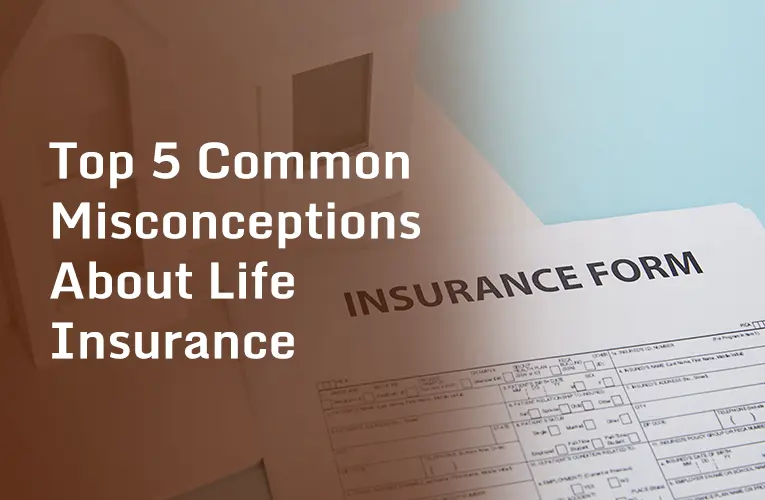Top 5 Common Misconceptions About Life Insurance
Myth: Life Insurance is Only Necessary for Older People
A prevalent misconception is that life insurance is only for older individuals who are nearing retirement. Many people believe that life insurance is unnecessary for younger people who are healthy and have no significant assets.
Reality: Life Insurance Benefits All Ages
In reality, life insurance can be beneficial at any age, and there are several reasons why younger individuals should consider it:
- Affordability: Life insurance premiums are typically lower for younger individuals, making it a cost-effective way to secure coverage early on.
- Financial Protection: If you have dependents, such as a spouse or children, life insurance provides financial protection in case of an unexpected death. This can cover living expenses, debts, and future needs.
- Locking in Rates: By purchasing life insurance at a younger age, you can lock in lower premiums for the long term. This can result in significant savings compared to buying coverage later in life.
- Building Cash Value: Permanent life insurance policies, such as whole life or universal life, build cash value over time. Starting a policy early allows you to accumulate cash value that can be accessed in the future.
**2. Life Insurance is Too Expensive
Myth: Life Insurance is Out of Reach Financially
Many people believe that life insurance is too expensive and that they cannot afford it. This misconception often stems from a lack of understanding of the different types of life insurance and their associated costs.
Reality: Life Insurance Can Be Affordable
The cost of life insurance varies based on several factors, including age, health, coverage amount, and type of policy. Here’s why life insurance can be more affordable than you might think:
- Term Life Insurance: Term life insurance is generally the most affordable type of life insurance. It provides coverage for a specific period (e.g., 10, 20, or 30 years) and typically has lower premiums compared to permanent policies.
- Customization: Life insurance policies can be customized to fit your budget and needs. You can choose coverage amounts and terms that align with your financial situation.
- Comparing Quotes: Shopping around and comparing quotes from different insurers can help you find the best rates. Many online tools and resources are available to simplify this process.
- Healthy Lifestyle: Maintaining a healthy lifestyle can positively impact your premium rates. Insurers often offer lower rates for individuals with good health and low-risk factors.
**3. Life Insurance Only Pays Out if You Die
Myth: Life Insurance Only Provides a Benefit After Death
A common misconception is that life insurance is only useful in the event of death and that there are no benefits while you’re alive. This belief can lead some people to overlook the potential value of life insurance.
Reality: Life Insurance Offers Additional Benefits
Depending on the type of policy, life insurance can offer various benefits beyond a death benefit:
- Cash Value Accumulation: Permanent life insurance policies, such as whole life or universal life, build cash value over time. This cash value can be accessed through loans or withdrawals, providing financial flexibility during your lifetime.
- Living Benefits: Some life insurance policies include living benefits or riders, such as accelerated death benefits. These benefits allow you to access a portion of the death benefit if you are diagnosed with a terminal illness or face specific health conditions.
- Income Replacement: Life insurance can provide a source of income replacement for your family in the event of your death, ensuring that their financial needs are met. This can be particularly important if you are the primary breadwinner.
**4. Life Insurance is Only for High-Net-Worth Individuals
Myth: Life Insurance is Only Necessary for the Wealthy
Another misconception is that life insurance is only relevant for high-net-worth individuals or those with significant assets. This belief can lead people to overlook the importance of life insurance for those with modest incomes or assets.
Reality: Life Insurance is Valuable for All Income Levels
Life insurance is valuable for individuals of all income levels for several reasons:
- Debt Coverage: Life insurance can cover outstanding debts, such as mortgages, car loans, and credit card balances, preventing your family from being burdened with these financial obligations.
- Income Replacement: For families dependent on your income, life insurance provides financial support to replace lost income, helping to maintain their standard of living.
- Education Expenses: Life insurance can help cover future education expenses for your children, ensuring they have the opportunity to pursue higher education without financial strain.
- Funeral Costs: Life insurance can cover funeral and burial expenses, alleviating the financial burden on your family during a difficult time.
**5. Life Insurance is Too Complicated to Understand
Myth: Life Insurance is Too Complex to Figure Out
Many people avoid considering life insurance because they believe it is too complex and difficult to understand. The terminology, policy options, and details can seem overwhelming, leading to confusion and inaction.
Reality: Life Insurance Can Be Simplified
While life insurance may initially seem complex, it can be simplified with the right approach:
- Education and Research: Take the time to educate yourself about the different types of life insurance, including term life, whole life, and universal life. Understanding the basics can help you make informed decisions.
- Professional Guidance: Consult with a licensed insurance agent or financial advisor who can provide personalized advice and help you navigate the options. They can explain policy details, answer your questions, and assist in finding the right coverage for your needs.
- Online Resources: Utilize online resources, such as insurance comparison tools and educational websites, to gain a better understanding of life insurance and compare policy options.
- Simple Policies: Start with a straightforward term life insurance policy if you find the options overwhelming. Term life insurance is easy to understand and provides essential coverage without the complexity of permanent policies.
Conclusion
Life insurance is a crucial aspect of financial planning, offering protection and peace of mind for you and your loved ones. By debunking common misconceptions, such as the belief that life insurance is only for the elderly, too expensive, or too complicated, you can make more informed decisions about your coverage.
Understanding the true benefits of life insurance, including its affordability, additional features, and value for all income levels, will help you recognize its importance in your financial strategy. Whether you are considering life insurance for the first time or reevaluating your existing policy, addressing these misconceptions will empower you to make choices that align with your needs and goals.
By approaching life insurance with accurate information and a clear understanding of its benefits, you can ensure that you are providing the best possible financial security for your loved ones and achieving peace of mind for yourself.









